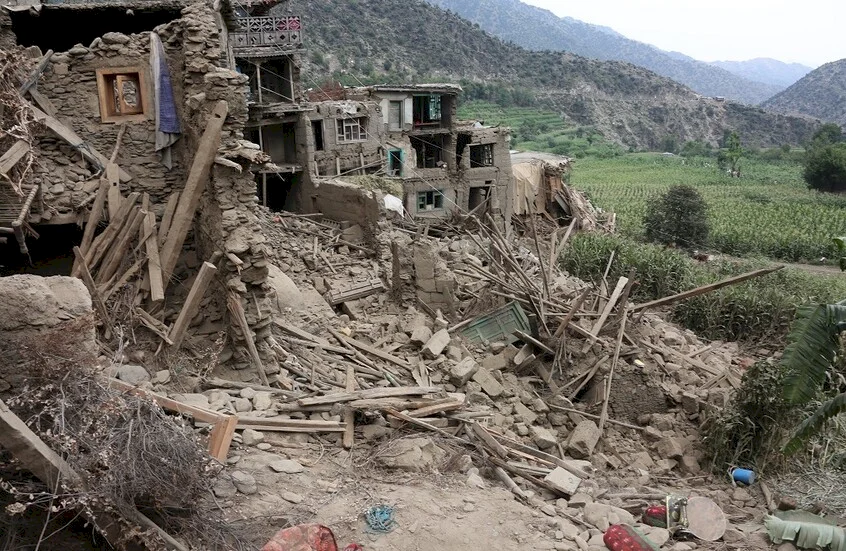
20 People Killed in Earthquake in Afghanistan
SadaNews - At least 20 people were killed as a result of a strong earthquake with a magnitude of 6.3 that struck northern Afghanistan late Sunday to Monday, two months after more than 2,000 people died in the highest toll from earthquakes recorded in the country’s modern history.
The earthquake occurred at a depth of 28 kilometers at 20:28 GMT on Sunday, with its epicenter located in the town of Khulm in Samangan province, near Mazar-e-Sharif, the capital of Balkh province, according to the U.S. Geological Survey.
Afghanistan’s Health Ministry spokesperson Sharafat Zaman said in a video released to journalists early Monday that "about 320 of our citizens were injured and more than 20 were killed" in the provinces of Balkh and Samangan, confirming that this number is not final.
Earlier, Afghanistan's Disaster Management Authority confirmed that most of the injured in Samangan province had returned home after receiving treatment in hospitals.
In Mazar-e-Sharif, damage occurred to the Blue Mosque, which dates back to the 15th century and is one of the most prominent tourist landmarks in Afghanistan.
Some stones fell from the mosque, particularly around the minaret, and were scattered on the ground. Journalists were not permitted to take photos of the mosque immediately.
The Afghan Ministry of Defense reported that it has managed to reopen the Tashqurghan Pass road in Samangan province after a landslide caused by the earthquake blocked it.
Residents in several areas of Afghanistan, including Kabul, hundreds of kilometers from the earthquake's epicenter, felt the tremor.
In Mazar-e-Sharif, many rushed outside their homes fearing potential aftershocks.
Seismic Activity Zone
This comes nearly two months after a 6.0 magnitude earthquake struck areas in eastern Afghanistan, resulting in more than 2,200 deaths and over 4,000 injuries, making it the deadliest earthquake in the country’s modern history. It also led to the destruction of nearly 7,000 homes.
The previous earthquake was followed by many devastating aftershocks that hindered access to the affected areas, most of which were in agricultural and remote areas along the border with Pakistan.
Weak communication networks and infrastructure in Afghanistan obstruct disaster response and delay access to remote villages for damage assessment for days.
The United Nations Office for the Coordination of Humanitarian Affairs (OCHA) estimated that $111.5 million is required to respond to the needs of the population after the earthquake, which has left 221,000 people in a state of "severe need" for assistance.
Afghanistan, located at the intersection of the Eurasian and Indian tectonic plates, is subject to frequent earthquakes.
Since 1900, Northeast Afghanistan has experienced 12 earthquakes with magnitudes exceeding seven, according to Brian Baptie, a seismologist at the British Geological Survey.
In October 2023, a 6.3 magnitude earthquake struck Herat province in western Afghanistan, followed by a series of strong aftershocks, resulting in the deaths of over 1,500 people and the destruction or damage of more than 63,000 homes, according to UN estimates.

International Organization for Migration: More than 36,000 Sudanese flee from North Kordof...

20 People Killed in Earthquake in Afghanistan

Trump Threatens Military Action in Nigeria and Warns Venezuelan President

Two Sudanese Ambassadors Threaten to Expel Rapid Support Forces from Al-Fasher

The Arab League on the Anniversary of the Balfour Declaration: Occupation Continues Its Cr...

Bezhakian states: We will rebuild nuclear facilities with greater strength

Congo Announces Start of Extensive Investigation into Illegal Mining Activities

